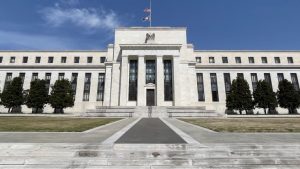

There is no question that like a large number of tasks that are standing by more good economic situations before dispatch, Circle presumably would have favored holding up half a month prior to making such a declaration. For this situation, it appears to be that in the event that they don’t act rapidly, the open door might close for great.
The choice to open up to the world through a particular reason securing organization (SPAC) instead of the conventional first sale of stock (IPO) technique is a page directly out of Coinbase’s playbook.
The current administrative necessities of offering your offers to a solitary purchaser are substantially more remiss than giving new offers to the overall population through a guarantor.
Presently that U.S. Protections and Exchange Commission Chair Gary Gensler is focusing on it to take action against SPACS, we can perceive any reason why sitting tight for a superior market isn’t actually an alternative.
In any case, a valuation of $4.5 billion isn’t awful at all for a crypto organization, particularly given the degree of vulnerability on the lookout.
Circle’s place
This isn’t only any crypto organization however, and the figure above is in reality beautiful low, essentially to me.
Those of you who have been perusing this day by day pamphlet for some time likely definitely know my contemplations on the fate of national bank advanced monetary forms (CBDCs) in the U.S.
Basically, there presumably will not be any concentrated FedCoin at any point in the near future. They’re excessively far behind, and that is not actually how the framework is set up at any rate.
Most U.S. dollars are conceived not at the Federal Reserve or even the Treasury, yet from the actual banks. At the point when somebody applies for a new line of credit, the bank essentially clicks a couple of catches and mysteriously makes the cash.
On account of fragmentary save banking, the bank just requirements to hold a tiny measure of the money in their coffers. Toward the beginning of the pandemic, that save prerequisite was set to nothing, implying that banks could loan as much cash as they needed without holding anything in their stores, yet I deviate.
this is in reality extremely sound for the framework, since it diminishes the danger of infection. On the off chance that Wells Fargo fails, it will not bring the whole U.S. economy down.
Maybe, all dollars available for use will be straightforwardly discernible back to their starting place, and there can exist a little premium for dollars gave by more grounded establishments.
Many existing monetary foundations, in any case, may select not to give their own coin, yet rather depend on an outsider assistance that will issue the stablecoins for them.
Right now, there is one in particular that is generally flowed and is agreeable with all known U.S. guidelines, and that is USD coin.
In our evaluation, USD coin has a reasonable shot at turning into the most broadly utilized emphasis of the U.S. dollar.
Having the right stuff
As far as current status however, it’s off by a long shot to the market chief tie, which fundamentally has the overwhelming majority of crypto market exchanging.
Recently, July 7, tie had a turnover of roughly $51 billion, while USD coin just worked with $2.3 billion. In the event that we measure by market capitalization notwithstanding, which is a more precise portrayal of how much cash is really being put away as stablecoins, USD coin is acquiring rapidly.
This diagram shows the individual market cap of the top digital currencies, where we can see that USD coin’s piece of the pie is slowly acquiring as the whole business is seeing hazardous development.
The loaning rates on a portion of the top DeFi locales might fill in as a decent pointer also. Commonly, marking tie will grant a marginally better return than USD coin.
So despite the fact that tie is all the more promptly accessible and more fluid, USD coin is simply seen as a more steady speculation vehicle.



